Namibia is a country for adventurers. There are miles of undulating dunes to climb in the Namib Desert, which is the oldest desert in the world. There are craggy granite mountains to scale, and ghost towns to explore. There are numerous opportunities for seeing wildlife, including Cape Cross, the country’s largest Cape fur seal colony.
The landscape is etched with history. Ancient petroglyphs are carved into the rock; the shorelines are scattered with forgotten shipwrecks. Colonial outposts evoke the country’s history of settlement and oppression. And the land itself is a living history - a visual reminder of 450 million years of geological processes.
Curiosity aroused? If you want to explore further, these are our best places to visit in Namibia, from Swakopmund and Moon Valley to the Skeleton Coast...
1. Swakopmund
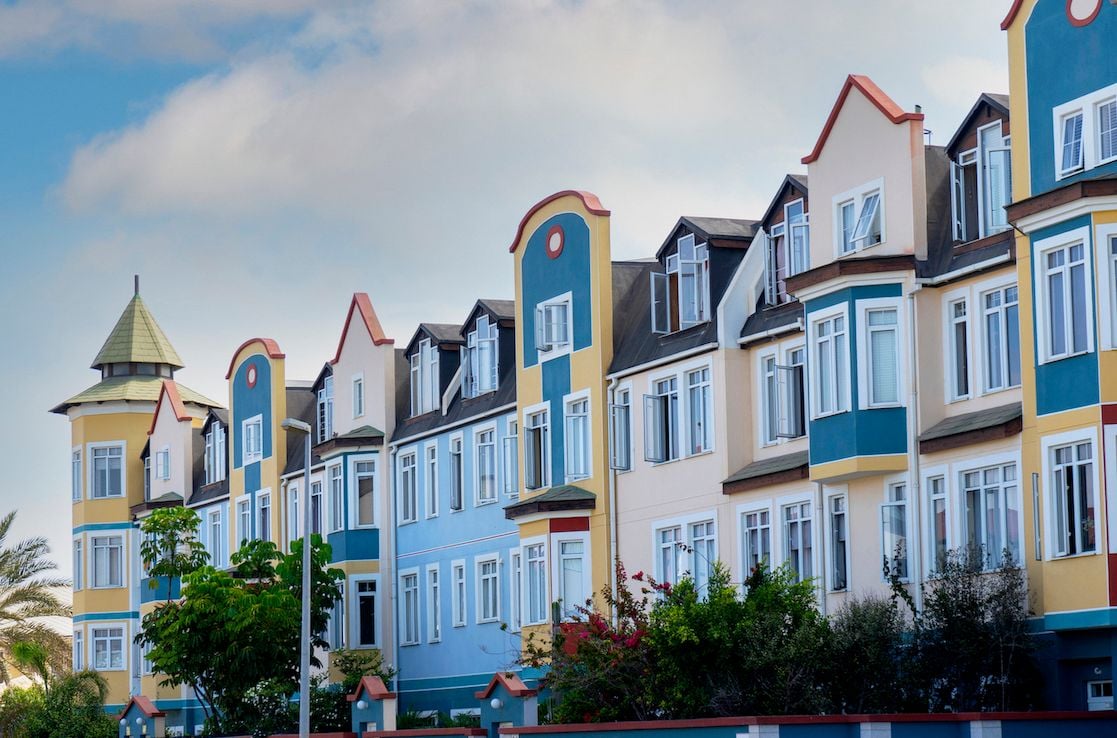
Perfect for: Vestiges of Bavarian glamour in desert settings
Founded by German colonists in 1892, Swakopmund is a surreal combination of faded Bavarian glamour surrounded by sparse desert dunes. Known as Namibia’s adventure capital, this is the place to organise expeditions to the Namib Desert and beyond, as well as adrenaline-fuelled activities like skydiving and sandboarding. But it’s far more than a place you pass through on the way to somewhere else.
Make time to explore. Stroll the salt-weathered wooden jetty, or walk along the old sea wall (known as the Mole). Admire the colonial architecture of the Woermannhaus, Hohenzollernhaus and the railway station, Bahnhof. Visit a Bavarian-style beer house for a lunch of schnitzel, sauerkraut and craft beer; then have dinner in a traditional African restaurant.
A 30-minute drive south of the city will take you to Dune 7, one of the tallest sand dunes in the world at 383m. Climb to the top and take in the sight of sand stretching out to the horizon - then sandboard back down.
2. Moon Valley
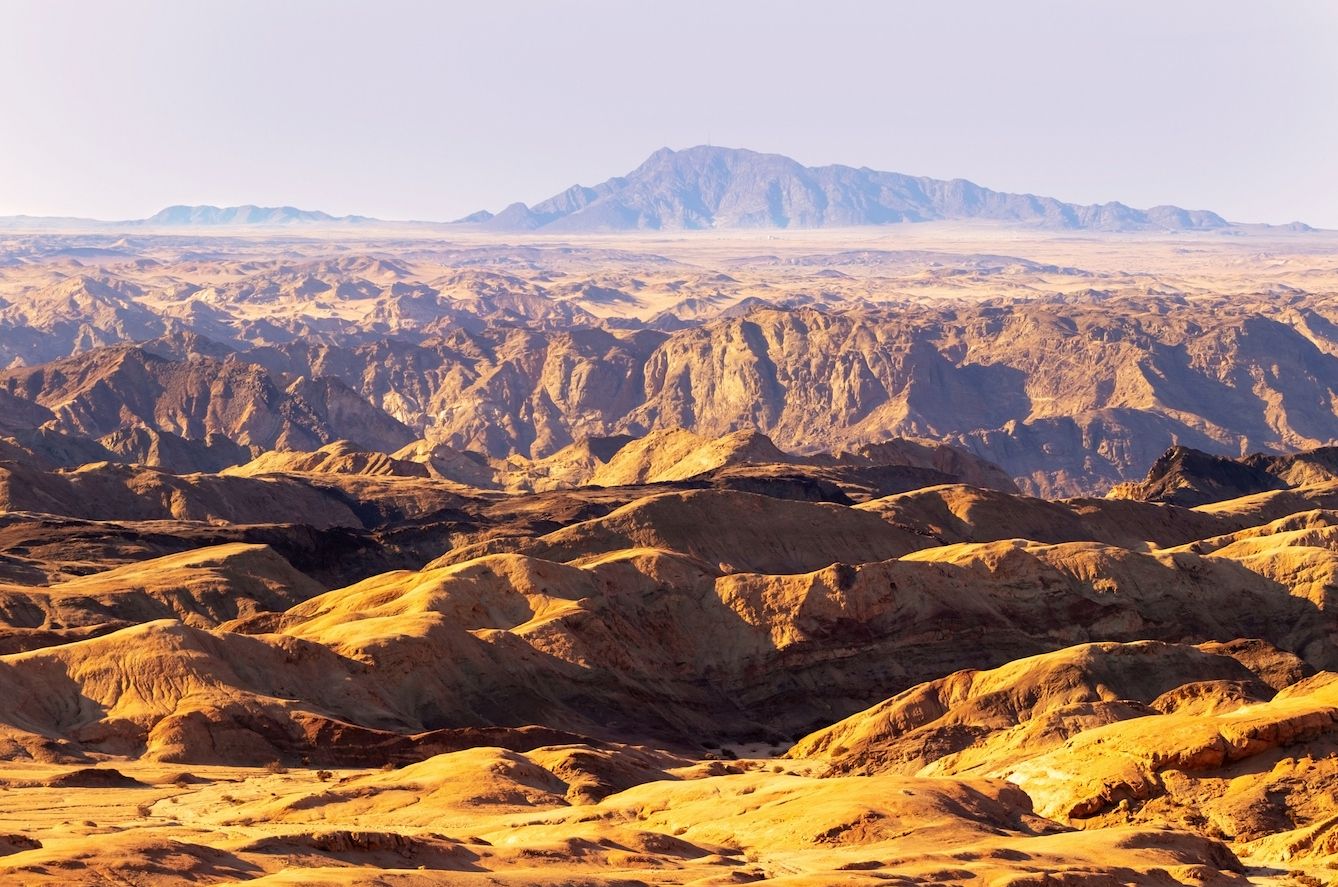
Perfect for: Ancient plants and lunar landscapes
Head east from Swakopmund and the rolling golden dunes of the Namib desert will be replaced with a lunar landscape of barren grey boulders. They’re made of dolerite, which was formed around 450 million years ago when the supercontinent of Gondwana broke apart and hot magma spewed up through the cracks. Over time, the elements have carved spiny ridges and steep valleys into the dolerite, creating a sparse, otherworldly landscape.
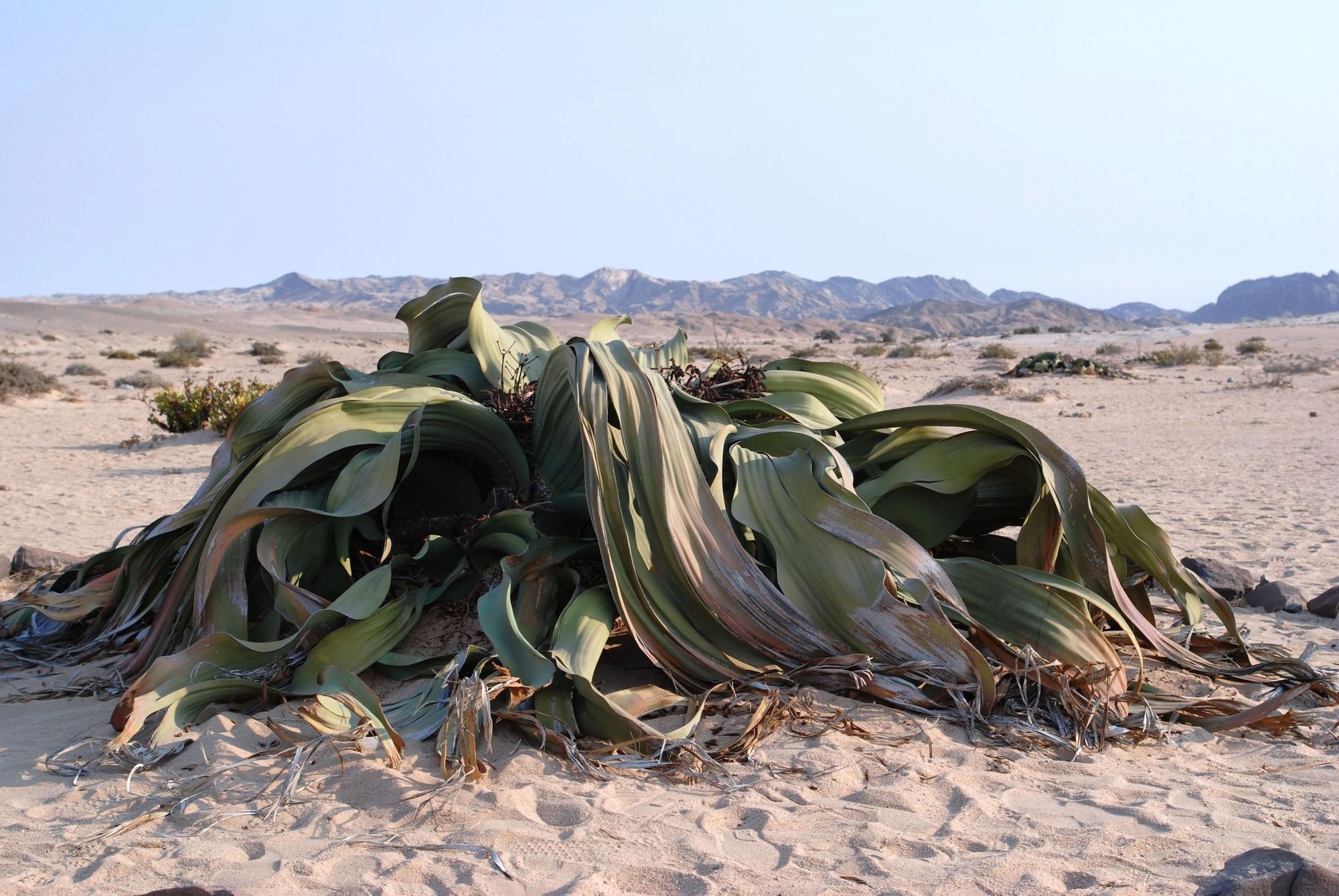
Barely anything grows here except for welwitschia mirabilis, a plant species endemic to the Namib Desert. These plants can grow to be over 1000 years old - their unusual appearance fascinates tourists and botanists alike. “I could do nothing but kneel down and gaze at it, half in fear lest a touch should prove it a figment of the imagination,” wrote botanist Friedrich Welwitsch when he first ‘discovered’ it in 1859.
3. Skeleton Coast National Park
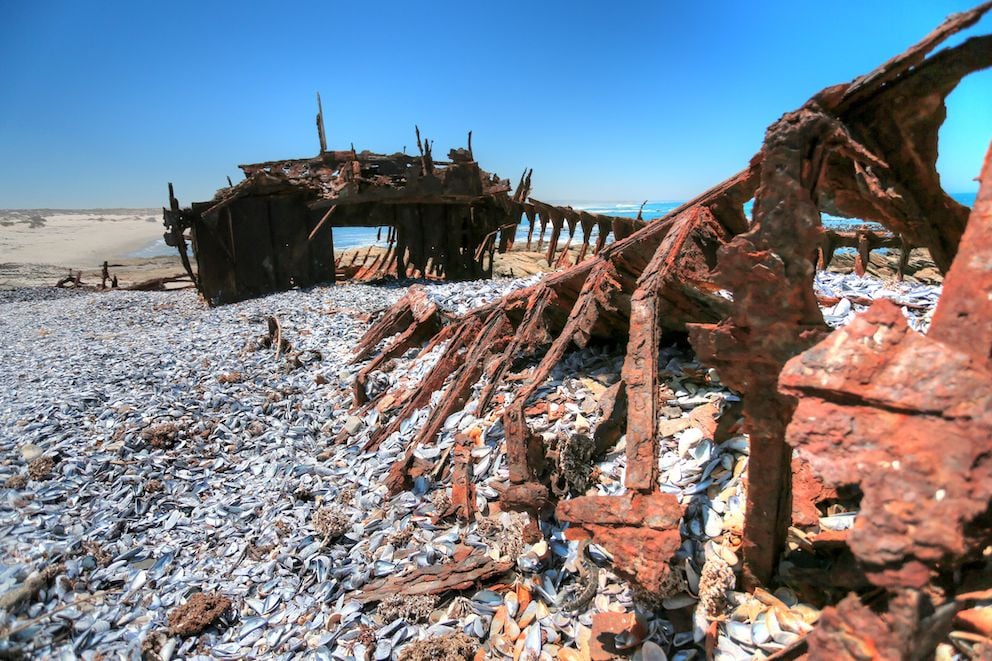
Perfect for: eerie, wild shoreline walks
Namibia’s coastline - where rolling golden dunes meet Atlantic waves. The cold Benguela current lowers the temperature of the sea, producing a thick fog as it hits the warm sand. The Skeleton Coast National Park takes up around a third of this coastline (approximately 311 miles of it). It’s known for its windswept dunes, ancient lava flows and mountain ranges. And, of course, the bones.
The Skeleton Coast was named after the whale skeletons that once littered its shores, eerie remnants of the whaling industry. But other bones have now replaced them - the industrial, rusting ribs of wrecked ships, which fell prey to rocky outcrops and the heavy fog. This wild and desolate place is rarely frequented by tourists - to visit the northern end of the park you’ll need a permit, or to travel with a licensed operator.

4. Twyfelfontein (ǀUi-ǁAis)
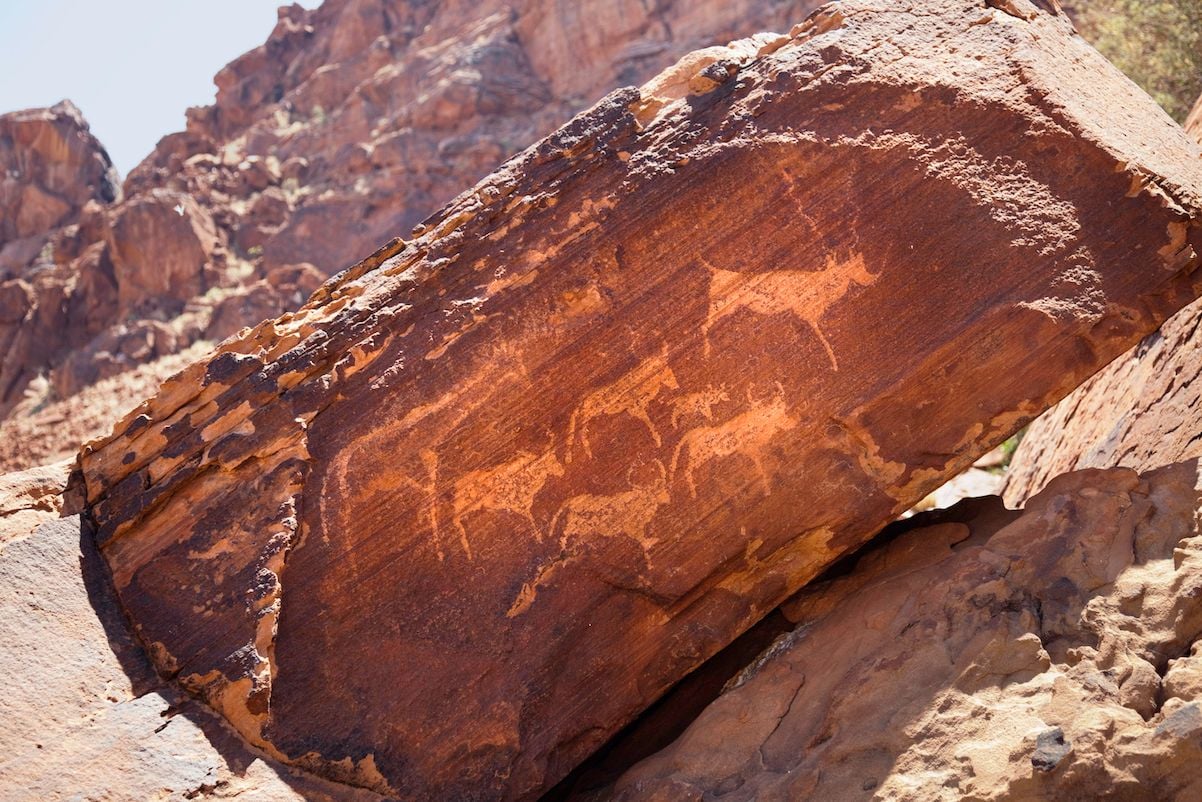
Perfect for: a rocky reminder of the past
Twyfelfontein (known by the local Damara as ǀUi-ǁAis) is a valley in the Damara Highlands, renowned for its vast collection of rock paintings and petroglyphs by the San Bushmen. They number around 2,500 - one of the highest concentrations in Africa - and some could be up to 10,000 years old. Many of the petroglyphs are of hunting parties and different animals, such as antelopes, giraffes and even a seal - remarkable considering the sea is 60 miles away.
In the past, vandalism and stealing the petroglyphs was common practice. But UNESCO declared Twyfelfontein a world heritage site in 2007 to help protect it. Travellers to the region can now only visit the area with a local guide.
5. Etosha National Park
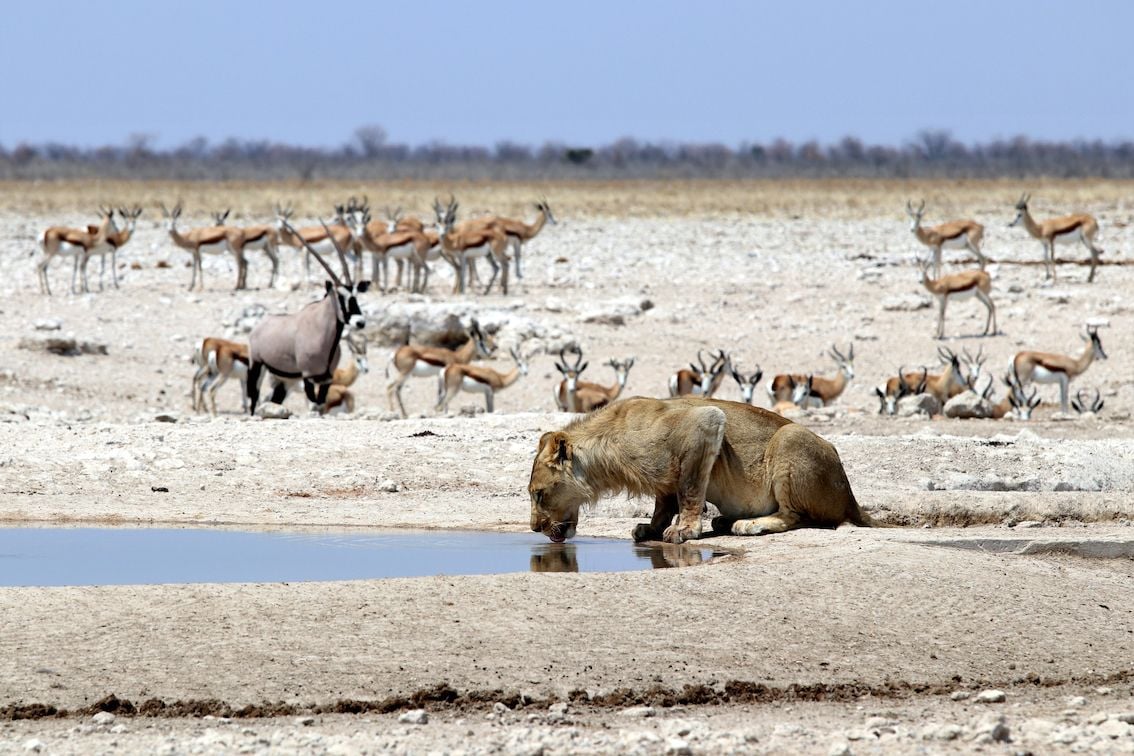
Perfect for: sightings of the country’s most charismatic species
Etosha National Park is a must-visit for anyone interested in wildlife. It’s a vast, saline desert, which transforms into a shallow lagoon during the rainy season. When this happens, the waters teem with migratory birds such as pelicans and flamingos. But the best wildlife spotting is during the dry season, when hundreds of animals congregate around the region’s waterholes.

The park is home to 114 mammal species, 340 bird species, alongside reptiles, amphibians and insects. Keep an eye out for elephants, giraffes, blue wildebeest, hyenas, cheetahs, jackals and many more. Endangered species include the black-face impala and the black rhinoceros.
6. Sossusvlei
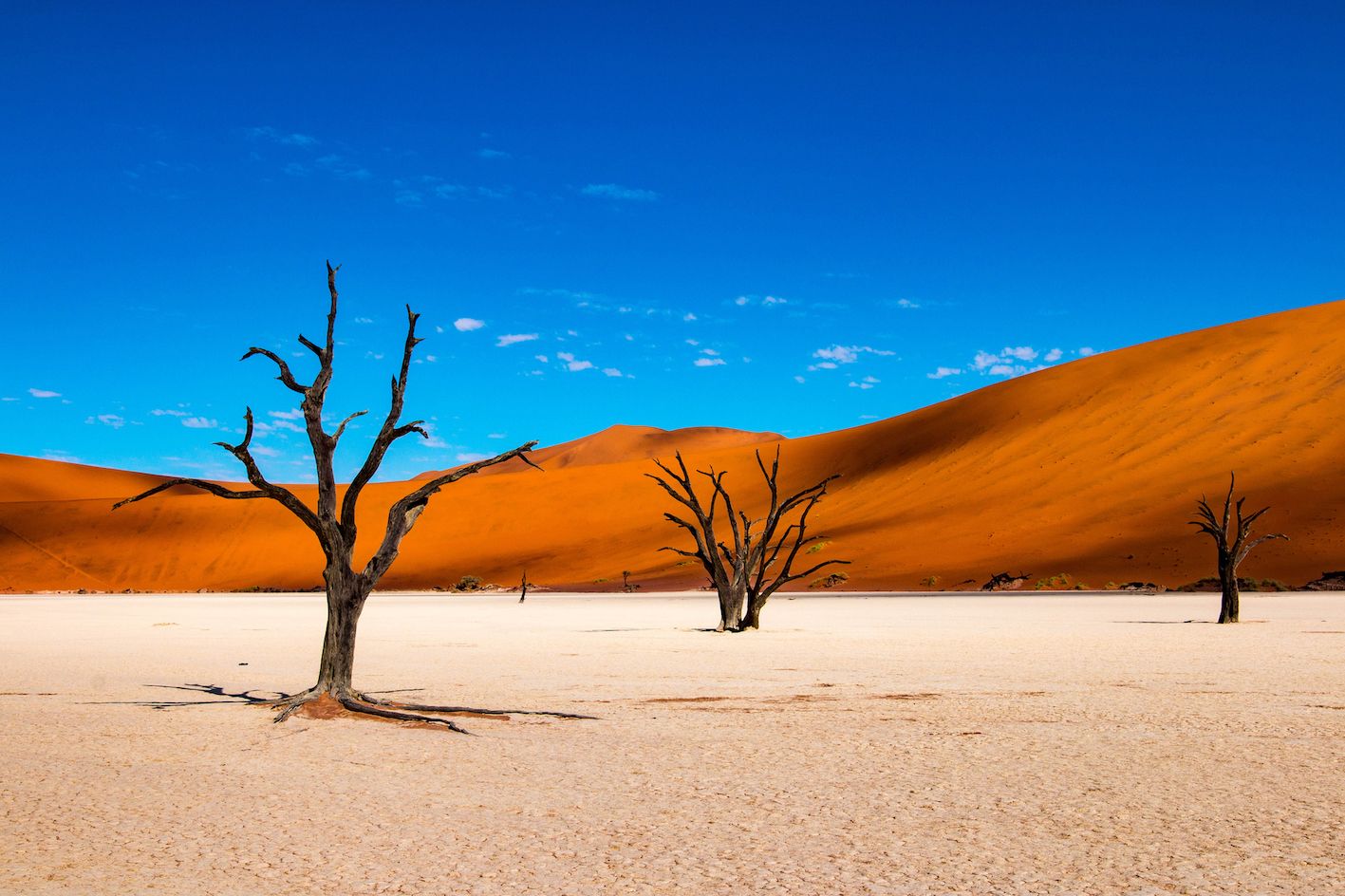
Perfect for: memorable, shifting dunescapes
One of the most spectacular areas of the Namib-Naukluft National Park is Sossusvlei, which translates to ‘dead-end-marsh’ - where a confluence of sand dunes have blocked the flow of the Tsauchab River. Due to the desert conditions, the river rarely reaches this far. Unless there’s heavy rainfall, Sossusvlei remains a vast salt pan surrounded by undulated dunes in various shades of red and orange. They’re known as ‘star dunes’, as they’re shaped on all sides by the shifting direction of the wind.
While Sossusvlei refers specifically to the salt pan at the end of the Tsauchab River, many people use it as a descriptor for a wider region. This includes Deadvlei - a white clay pan contrasting sharply with the black silhouettes of the dead camel trees growing through it - and the dramatic, undulating mound of Dune 45.
7. Cape Cross Seal Reserve
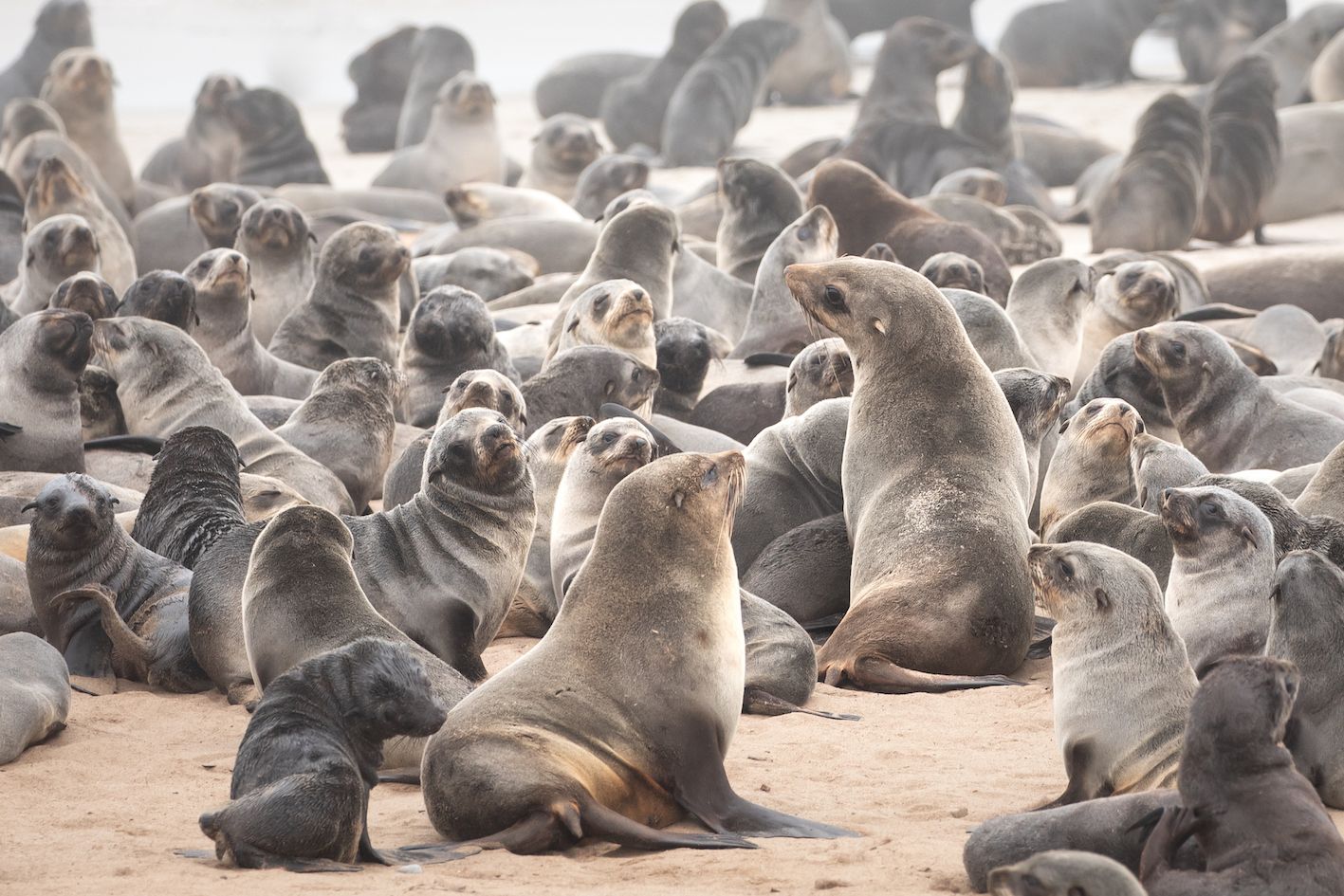
Perfect for: animal lovers in search of wildlife spectacles
This remote headland on the Skeleton Coast is home to one of the world’s largest Cape fur seal colonies. During the breeding season in November and December, Cape Cross Seal Reserve swells to up to 210,000 fur seals, who’ve come ashore to give birth, breed and nurse their newborn pups.
Alongside the seals, you might see their natural predators - black-backed jackals and brown hyenas - alongside a host of bird life, from flamingos to terns. An elevated walkway will offer you a spectacular view of the colony. But be warned - the smell of seal excrement and guano is very strong!
8. Spitzkoppe
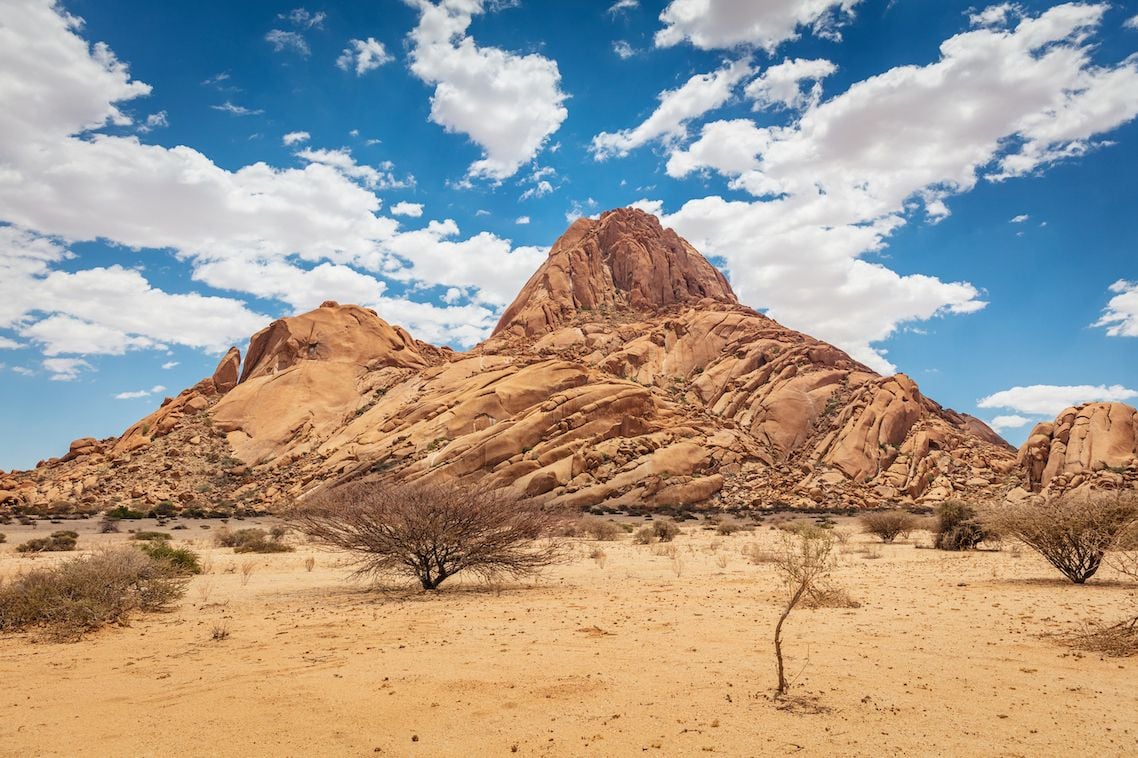
Perfect for: intrepid hikers eager to summit Namibia’s answer to Matterhorn
In between Usakos and Swakopmund, a group of pyramid-shaped granite mountains soar above the flat desert plains. They’re known as the Spitzkoppe, which means ‘pointed dome’ in German. The highest peak is 1728m high (670m above the desert floor), while the nearby Little Spitzkoppe has an elevation of 1,584m. Movie buffs might recognise them as the backdrop to the ‘Dawn of Man’ scene from 2001: A Space Odyssey.
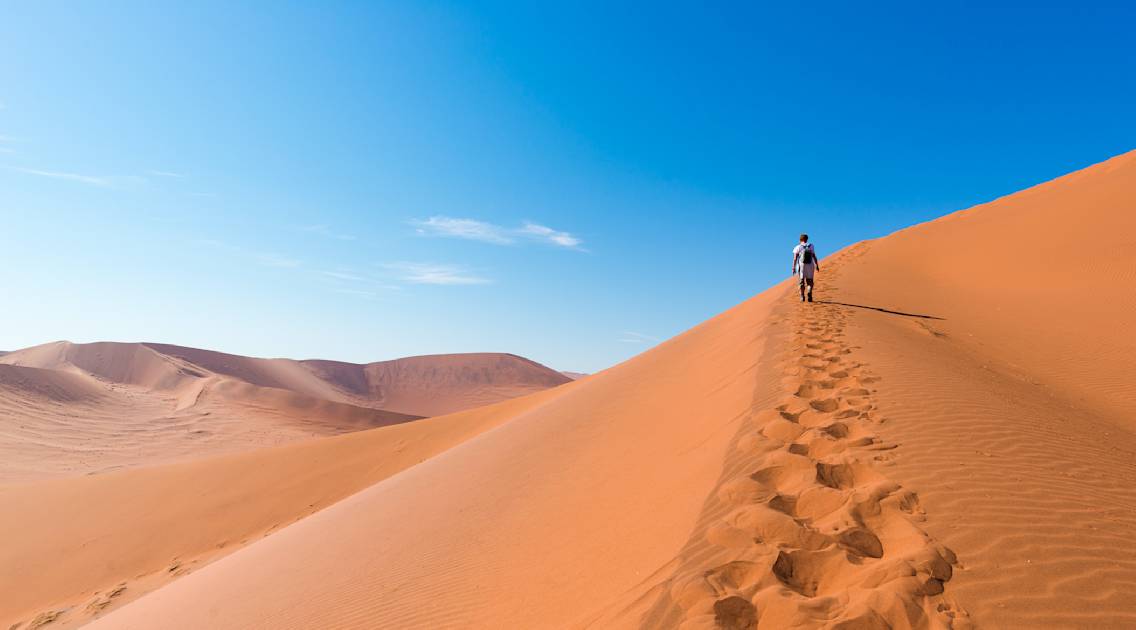
Nicknamed ‘the Matterhorn of Namibia’, the mountains attract outdoor adventurers. The ascent of the largest peak is a challenge for climbers, especially the sheer west side, while the smaller peak and surrounding granite boulders and arches make for good hiking territory. The range is also home to Bushman’s Paradise, a cave containing rock paintings up to 4000 years old.
9. Kolmanskop
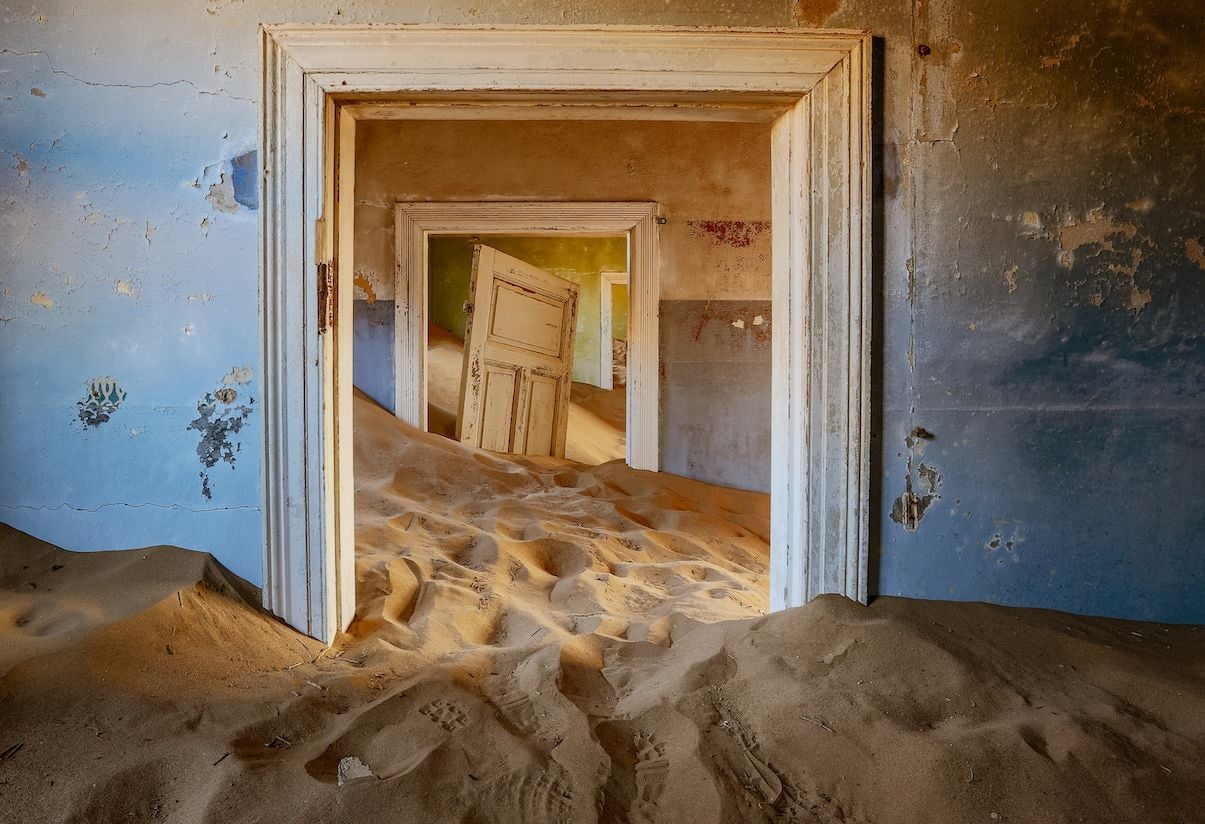
Perfect for: those intrigued by abandoned places
The town of Kolmanskop is a monument to how the fortunes of a place can change. In 1908, a Namibian railway worker discovered diamonds while shovelling sand. A township quickly sprung up near the site, as prospectors moved into the area. Within four years, Kolmanskop was the site of 11.7% of the world’s diamond production; an oasis of opulence within the desert.
German authorities cracked down, declaring the area ‘Sperrgebiet’, a restricted zone. Intensive mining quickly depleted resources - the town was abandoned by 1956, when the diamonds ran out. It’s now the Namib Desert’s most famous ghost town. Sand has poured through the doorways and windows, while wind slowly erodes the ruins. It’s an eerie, compelling place to visit.
Feeling inspired? Check out our range of adventure holidays in Namibia!



